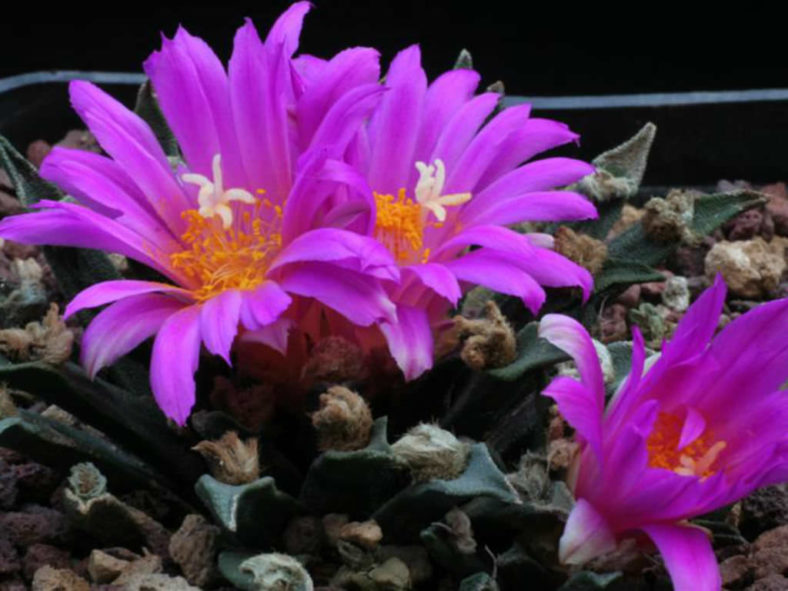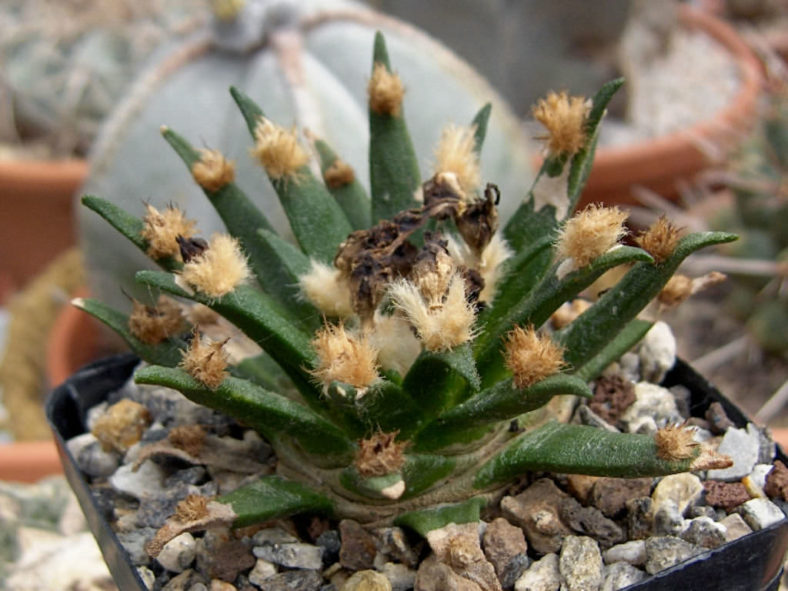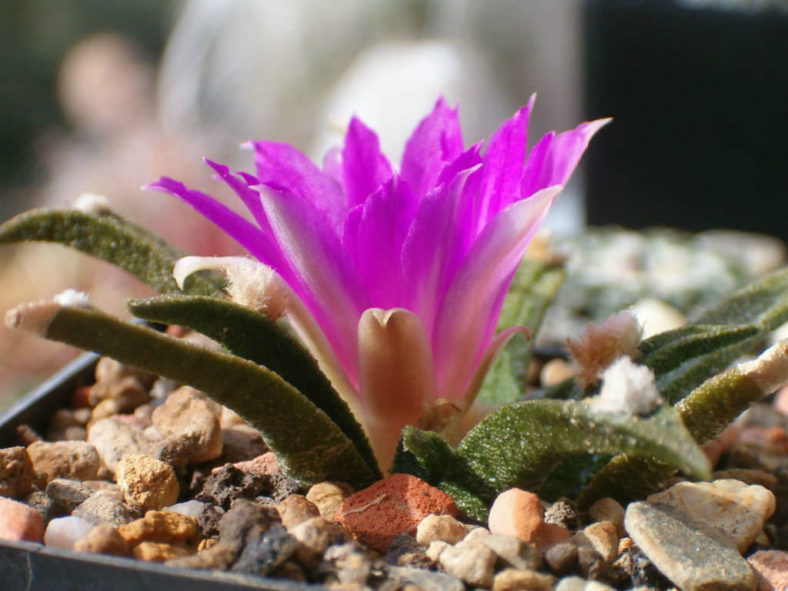Scientific Name
Ariocarpus agavoides (Castan.) E.F.Anderson
Common Name(s)
Tamaulipas Living Rock Cactus, Magueyito
Synonym(s)
Ariocarpus agavioides, Ariocarpus agavoides subsp. agavoides, Ariocarpus kotschoubeyanus subsp. agavoides, Neogomesia agavioides, Neogomesia agavoides
Scientific Classification
Family: Cactaceae
Subfamily: Cactoideae
Tribe: Cacteae
Genus: Ariocarpus
Etymology
The specific epithet "agavoides" (pronounced "ah-gav-OH-id-eez") means "resembling Agave" and refers to the likeness of this species to the members of the genus Agave.
Origin
The native range of Ariocarpus agavoides is in Tamaulipas and San Luis Potosí in Mexico. It grows on rocky limestone hills and alluvial plains at an elevation of about 3,950 feet (1,200 m).
Description
Ariocarpus agavoides is a small cactus with a greenish-brown, rosette-shaped stem with divergent, often flaccid tubercles. The stem is subglobose, somewhat flattened, and can grow up to 2.4 inches (6 cm) long and up to 3.2 inches (8 cm) in diameter. The rest of the plant is the rootstock growing underground. The tubercles are acute at the apices, flattened adaxially, and not strongly incurved, and can reach a length of 2.8 inches (7 cm) and a width of 0.4 inches (1 cm). The woolly areoles are round and can measure up to 0.2 inches (0.5 cm) in diameter and are 0.5 inches (1.2 cm) from the tips of the tubercles. The spines are usually absent or rarely two. They are whitish and can grow up to 0.4 inches (1 cm) long.
The flowers are magenta colored and can reach a length of 2 inches (5 cm) and a diameter of 1.6 inches (4 cm). They appear in fall on mature plants, 5 to 8 years of age. The fruits are pinkish-red to reddish-purple, globose, and can grow up to 1 inch (2.5 cm) in diameter.

Hardiness
USDA hardiness zones 9b to 11b: from 25°F (-3.9°C) to 50°F (10°C).
How to Grow and Care
Grow your Ariocarpus in soil formulated for cacti. You can buy a cactus mix at your local nursery. Avoid using generic soil mixes, as they will not provide sufficient aeration and drainage. Additionally, using a container without a hole, whether a pot or a terrarium, is a bad idea for the same reason.
Ariocarpus needs a lot of sunlight. However, in hot, dry areas, they can be damaged by excessive sunlight, so you should use a shade cloth to limit their exposure to the sun or move them out of it during the hottest hours of the day. In more temperate areas, direct sunlight is fine.
These cacti prefer to be kept at room temperature or slightly lower and in low humidity.
Water your Ariocarpus when it is dry, but then wait until the soil dries out completely to water it again. The amount of time this takes will vary depending on your climate and the size of your pot, if you use one.
Learn more at How to Grow and Care for Ariocarpus.
Links
- Back to genus Ariocarpus
- Succupedia: Browse succulents by Scientific Name, Common Name, Genus, Family, USDA Hardiness Zone, Origin, or cacti by Genus
Photo Gallery
Click on a photo to see a larger version.


